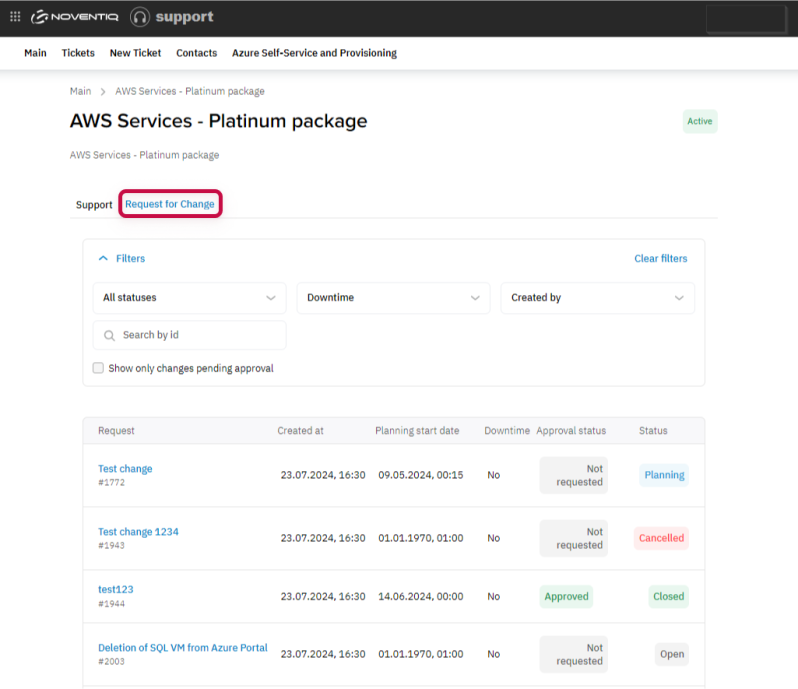Overview
What is it?
Change Management is the process of tracking and managing a change throughout its entire life cycle, from start to closure, with the aim to minimize risk to a business. As part of our Managed Service offering, we align with ITIL v4 Change Management processes and procedures and adapt where necessary to accommodate your specific business needs. Change management is an internal process in Managed Services provider -all change activities are managed by Noventiq Managed services teams.
Through Noventiq Support portal we provide our customers with full visibility on all the changes to their infrastructure. Details on the Changes you can find on a Service Package detailed page.
Our Change Management process includes 3 types of Changes:
- Standard change- is a pre-authorized change that is low risk, relatively common and follows a specified procedure or work instruction, and which can be implemented without needing additional authorization. A standard change is one that is frequently implemented, has repeatable implementation steps, and has a proven history of success.
- Emergency change- a change that must be implemented as soon as possible, for example to resolve a major incident or implement a security patch. This change is of such a high priority that it bypasses group and peer review and approval and goes straight to the Authorization state for approval by the Customer CAB approval group. These changes do not follow the complete life cycle of a normal change due to the speed with which they must be authorized.
- Normal change– a change which is enabled by a change model. Any service change that is not a standard change or an emergency change. Normal change requests follow a prescriptive process which requires two levels of approval before being implemented, reviewed, and closed. These changes require a full range of assessments and authorizations such as peer or technical approval, change management, and Change Advisory Board (CAB) authorization, to ensure completeness, accuracy, and the least possible disruption to service. These changes are most often scheduled outside of defined change blackout windows or during defined maintenance windows.
Change can be initiated by Customer user via Service request submission, or by Delivery team based on the contractual schedule of regular activities.

